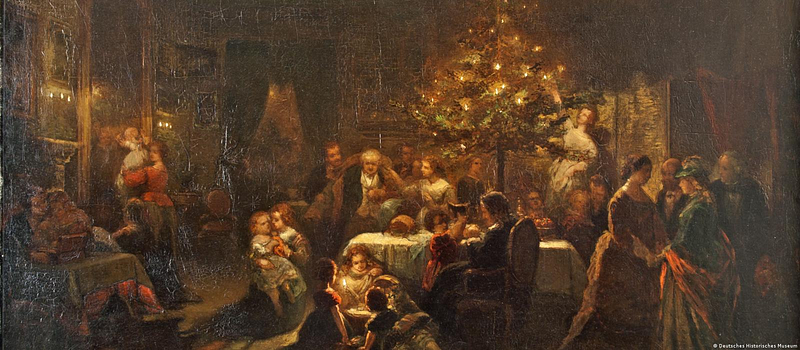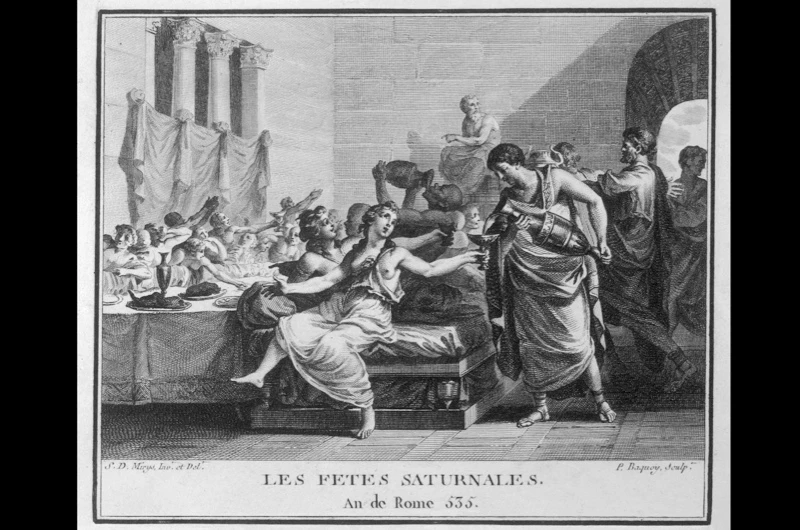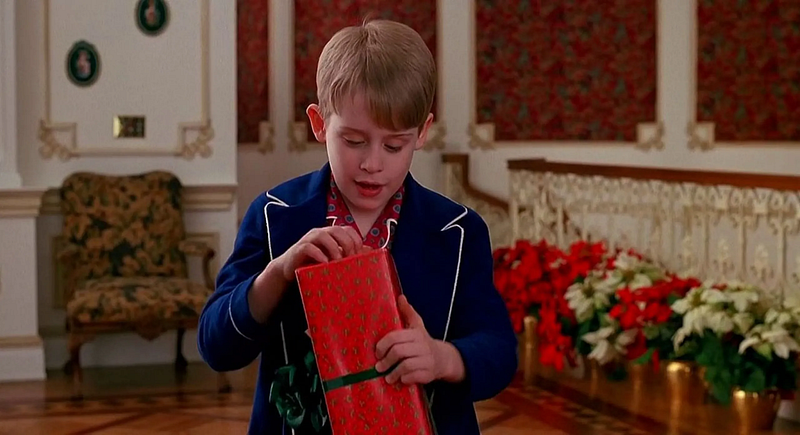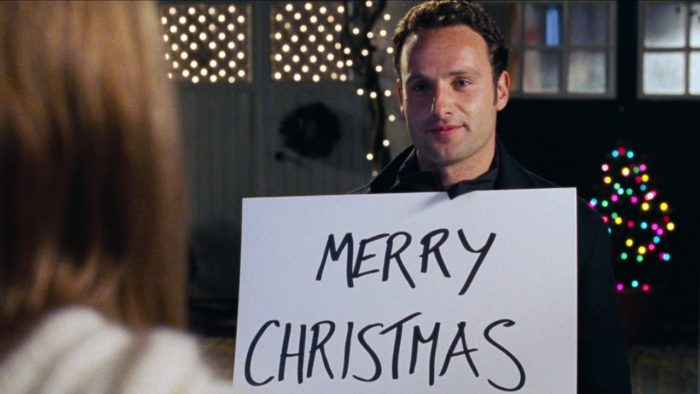The Myths of Christmas
It’s the most wonderful time of the year — Christmas. The time where we join our family and friends to share food, stories and presents…
It’s the most wonderful time of the year — Christmas. The time where we join our family and friends to share food, stories and presents. For many, it is a day to honour the birthday of Jesus Christ. But for others, Christmas is a holiday driven by traditions that originated centuries ago in recognition of pagan gods and festivals. The word Christmas originated as a compound meaning “Christ’s Mass”, derived from the Middle English Christemasse and Old English Cristes mæsse — a phrase first recorded in 1038. With over 2,000 years of history, Christmas season is rife with myths, legends, lies, misconceptions and commonly believed things that are not completely true. From the origin of the holiday to the modern marketing of iconic Christmas figures like Santa Claus to media’s glorification of the perfect Christmas; settle in as we debunk the myths of our beloved holiday.
Myth #1 Christmas in Origin; A Christian Celebration
Many people assume Christmas is strictly a Christian celebration and they would be right if modern evidence is to be considered. However, in regard to its origin, this notion cannot be farther from the truth. Christmas actually originated a few decades after the birth of Jesus in the old Roman Empire.
Christmas emanated as the Pagan celebration of the concept known as Saturnalia. This celebration was aimed at celebrating the return of the sun and the end of winter. Saturnalia is traditionally celebrated a week long, and is marked by lawless activity and a system of penal exemption from lawless acts such as housing breaking.
In the 4th century, Christians adapted the last day of Saturnalia to be the celebration of Christmas. The aim was to get the pagans to associate this period with positive things. Consequently, many pagans converted to Christianity with the promise that they could still celebrate their tradition on this day. Whether Jesus was actually born on the 25 of December is not substantiated by historical evidence.
Myth #2 Christmas trees have meaning relative to Jesus.

Evergreen trees — the type that is famously decorated during Christmas were already popularised before Jesus’s birth, but didn’t become a widely held symbol of Christmas until the Renaissance. Folklore offers a number of explanations behind the true meaning of the tree. Some suggest that it was inspired by the paradise tree — a symbol of the Garden of Eden that featured in a mediaeval play about Adam and Eve. While others believe the Christmas tree evolved from Christmas pyramids; wooden structures decorated with evergreen boughs and religious figures. However, historians do not believe there’s any evidence to those theories, hence they concluded that the Christmas tree is religiously neutral in the context of Christianity.
Historians say it’s more likely that the Christmas tree as we know it was born in the Alsace region during the 16th century (now part of France, the region was considered German territory at the time). Historical records indicate that a Christmas tree was raised in the Strasbourg Cathedral in 1539, and that the tradition had grown so popular throughout the region that the city of Freiburg banned felling trees for Christmas in 1554.
Still, the tradition caught on among German families and slowly evolved through the years to what we know today. Protestant reformer; Martin Luther is often credited with being the first to put lights on the Christmas tree with candles rather than today’s electric lights — which were invented in 1882 after a nighttime stroll through the forest with twinkling stars above. German emigrants took these traditions with them as they resettled in other countries and by the 18th century, Christmas trees were all over Europe.
Myth #3 Christmas is the Most Important Holiday in Christianity
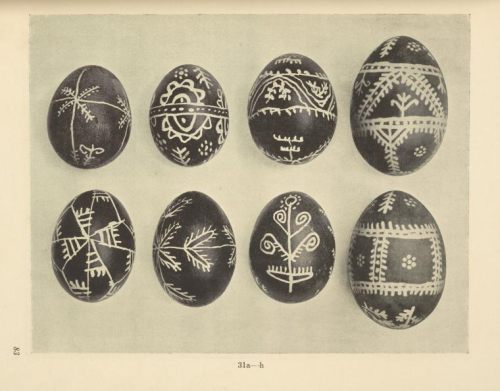
Fun fact: Easter has far more significance on the Christian calendar than Christmas does? Easter is one of the principal holidays, or feasts of Christianity. It marks the Resurrection of Jesus three days after his death by crucifixion. Historically, the birth of Jesus Christ was celebrated only centuries after it occurred. However, his death and resurrection were founded to have been celebrated by the earliest converts to Christianity. Easter was also found to have been celebrated way before Christmas on the traditional Christian calendar.
Myth #4 Modern-Day Santa
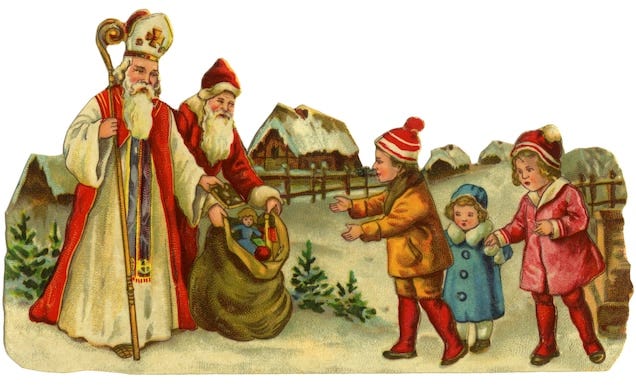
Many know Santa Claus to be the jolly man with red overalls who gives presents to children during Christmas. But Santa Claus is loosely rooted in fact, though he hasn’t always looked the way he does today, having evolved from a gift-giving Catholic saint who lived during the third century. The Protestant Reformation and the emigration of European traditions to America morphed that devout image into the red-suited persona that is now one of the most famous figures in the world, complete with his iconic army of elves and a magical sleigh pulled by nine reindeers.
St. Nicholas the Generous, who is believed to be the true Santa Claus, wasn’t always the round, bearded fellow squeezing through the chimney with a sack full of presents. The historical St. Nicholas was the revered Bishop of Myra, a Roman town in what is now Turkey, born around the year 270 A.D., and historians believe that Nicholas became bishop as a young man.
Nicholas was dedicated to helping the poor throughout his life, famously (and anonymously) paying for the dowries of impoverished girls. His reputation as a secret gift-giver around town grew with time, and he became known especially for depositing coins or treats in the shoes of children who would place them out for that very purpose, sometimes in exchange for carrots or hay left for his horses. Nicholas is traditionally depicted wearing a red bishop’s cloak, and was often helped by a small orphan boy, according to some legends.
After the canonisation of Nicholas’s death, he was declared as the patron saint of children, sailors, and all of Greece, among other things. Throughout the middle ages, he remained a popular figure of worship, with elaborate feasts held each year on the day he died; December, 6th and small gifts given to children in his honour.
After the protestant reformation in the 16th century, many Catholic preachers were suppressed in many regions of Europe. This caused a significant drop in the popularity of St. Nicholas. Only in The Netherlands was the celebration of St. Nicholas kept alive in the form of Sinterklaas. According to folklore, Sinterklaas was this kindly figure who travelled from house to house on the evening of December, 5th, leaving treats or presents in children’s shoes in exchange for a snack for his horses. In the Dutch tradition, Sinterklaas wore red bishop’s robes, had elfin assistants, and rode his horses over rooftops before slipping down the chimney to deliver the gifts.
Later, Sinterklaas came to America with the Dutch in the 1700s and 1800s. It was in the new colonies that he really evolved. The anglicising of the name from Sinterklaas to Santa Claus happened in 1773, when the name ‘Santa Claus’ was referenced for the first time, in a New York City newspaper. Santa’s character began to materialise in 1809, with the publication of author Washington Irving’s book “A History of New York,” in which the big man was described as portly and smoking a pipe instead of as a lanky bishop. In an 1822 poem entitled “A Visit from Saint Nicholas” — more commonly called “Twas the Night Before Christmas” — by Clement Moore, Santa is further imagined with a magic sleigh powered by reindeer, a sack full of toys, and a round stomach, “like a bowl full of jelly.” By the late 1800s, most depictions of Santa Claus followed this imagery, but the final cog in the Claus legend was provided by Coca-Cola ad illustrator Haddon Sundblom, whose 1930s red-suited Santa, complete with white-fur trim and leather boots, became the iconic standard recognisable today.
Myth #5 Santa’s ‘Naughty or Nice’ List
If you don’t already know, Santa keeps a list of all the good and bad children. He gives presents to those who behave well and nothing (or a coal) to those who don’t. Although this happens to be a common belief among Christmas traditions, from a historical context, there isn’t any evidence to prove that St. Nicholas actually enforced this belief when he was giving gifts to the children in his area. As mentioned before, St Nicholas was depicted as helping the poor throughout his life and he made no distinction of the children he provided charity for. The first mention of such a list occurs in the song, “Santa Claus is Coming to Town” by J. Fred Coots and Haven Gillespie who wrote the fun Christmas song in 1934. The song included the lyrics, “He’s making a list, He’s checking it twice, He’s gonna find out who’s naughty or nice.” The song goes on to say that Santa Claus sees everything that boys and girls do, so they better be good.
In retrospect, Santa’s ‘naughty or nice’ list has become a social practice amongst parents to incentivise their children to behave good or decently in order to receive their Christmas presents.
Myth #4 The Perfect Holiday
It’s beginning to look a lot like Christmas — except, it’s not. Not the sort of Christmas you’d see in movies, anyway. It is not snowing. There is no caroller in sight; no random mistletoe growing from as two people are about to kiss; no Christmas miracle that saves the day. In real life, Christmas holidays do not look anything like they do in the movies. Mind you, that’s not always a bad thing.
Sure, our trees aren’t as photogenic, our presents aren’t as nicely wrapped, we aren’t always able to see relatives around this time, or the turkey for the Christmas feast isn’t cooked properly. However, the media’s promotion of a perfect Christmas places a lot of pressure on our festivities, and it is important to remember that blunders will inevitably be made. Instead of focusing to execute the perfect Christmas, we should aim to make special memories with the people we care about.
Myth #5 Secularism has taken the ‘Christ’ out of Christmas
Over the years, Christmas has become embedded in the broader celebration of the holiday season. In the early nineteenth century, Christmas was perceived by writers like Washington Irving and Charles Dickens as a holiday that placed an emphasis on family, gift-giving and kind-heartedness. That was however the case until Christmas became the centre of a whole new economic world. Many argue that Christmas has become more focused on consumerism. The marketability of Christmas for big businesses has eroded the fundamental values of Christmas. Every year the music plays sooner, the lights go up before that, and the shopping comes before that.
However, just because Christmas has become more commercial and less religious, it does not necessarily signify that it has lost its meaning. The values of Christmas, and perhaps more importantly, the meaning of Christmas lies in the individual. No longer is it a holiday for just one religion, but what is truly magical is that it has welcomed all. Any sense of the spirit of Christmas, religious or secular, includes generosity. Charities Aid Foundation even reports that more money goes to good causes in December than any other month of the year. To many, the act of buying gifts, watching a film or listening to a Christmas playlist while getting in the spirit of Christmas and putting up decorations are all part of spending time with people you care about. Just because the holiday has adapted to a new age, the values are not all lost.
While Christmas may be at the brink of losing its Christian roots, the principles still hold true. In many ways, Christmas festivities and the traditional conception of Christmas are two sides of the same coin. We need to start accepting the fact that our traditions are constantly evolving. Christmas is now a universal festival that anyone may enjoy — not just a religious event anymore. On that particular day, people from all walks of life gather together to celebrate life in the spirit of Mr. Claus. And today, that is the true meaning of Christmas.
[Written by: Harshaall Medha Naidu. Edited by: Balvin Dhaliwal]


